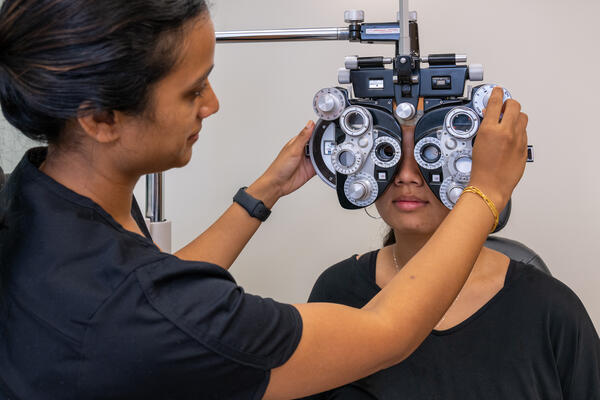Andalusia Optometrist: Specialist Eye Doctors in Your Location
The Pros and Cons of Various Refractive Surgical Procedures for Enhanced Eyecare

LASIK Surgical Treatment
LASIK surgical treatment is a commonly executed refractive procedure that aims to fix vision issues such as nearsightedness, astigmatism, and farsightedness. Throughout the treatment, a slim flap is developed on the cornea, and a laser is utilized to reshape the underlying tissue, dealing with the refractive error.
Among the primary advantages of LASIK surgical procedure is the quick improvement in vision experienced by many patients. Most individuals observe a considerable enhancement in their eyesight quickly after the treatment, with marginal downtime required for recovery. In addition, LASIK is understood for its high success price and low occurrence of issues when carried out by experienced specialists. Like any type of surgical treatment, LASIK also lugs some dangers, including completely dry eyes, glare, halos, and under or overcorrection of vision. It is essential for individuals considering LASIK surgical procedure to undergo a comprehensive assessment by an eye treatment specialist to determine if they appropriate candidates for the treatment.
PRK Treatment
The PRK procedure, likewise known as Photorefractive Keratectomy, is a kind of refractive surgical treatment that aims to remedy vision concerns similar to LASIK surgery. Unlike LASIK, which includes creating a flap in the cornea, PRK works on the surface layer of the cornea.
One of the benefits of PRK over LASIK is that it gets rid of the threat of flap-related complications because no flap is developed during the surgical procedure. In spite of the longer recuperation duration, PRK can be a suitable option for people seeking vision correction surgical treatment.
SMILE Surgical Procedure
A sophisticated refractive surgical procedure method obtaining appeal in the field of ophthalmology is SMILE Surgery. Tiny Laceration Lenticule Extraction (SMILE) is a minimally invasive treatment that corrects vision by improving the cornea making use of a femtosecond laser. Unlike traditional LASIK surgical treatment, SMILE Surgical procedure includes creating a little laceration in the cornea to extract a lenticule, which results in less disruption to the corneal framework and possibly faster healing times.
One of the main benefits of SMILE Surgical procedure is its ability to treat myopia (nearsightedness) and astigmatism with high accuracy, leading to superb aesthetic results for clients. The minimally intrusive nature of the procedure also lowers the risk of issues such as completely dry eye disorder, making it a beneficial alternative for people looking for refractive surgical treatment.

LASEK Method
Having checked out the advantages and considerations of SMILE Surgical treatment, one more noteworthy refractive surgery method worth checking out is the LASEK Method. LASEK, which represents Laser-Assisted Subepithelial Keratectomy, is a form of laser eye surgery that aims to fix refractive mistakes such as myopia (nearsightedness), hyperopia (farsightedness), and astigmatism.
Unlike LASIK, LASEK does not include producing a corneal flap. Instead, during a LASEK treatment, the cosmetic surgeon uses a diluted alcohol service to loosen up the thin outer layer of the cornea, understood as the epithelium. This layer is then gently relocated apart to permit the laser to improve the underlying corneal tissue. When the cornea has been reshaped to the desired level, the epithelial layer is rearranged.
Among the main benefits of LASEK is that it can be ideal for individuals with slim corneas who might not be good prospects for LASIK. In addition, LASEK usually results in marginal post-operative pain and a quicker recuperation time compared to PRK. The aesthetic healing procedure with LASEK might be a little longer than with LASIK.
Implantable Get In Touch With Lenses
Implantable Call Lenses provide a lasting vision modification solution for people seeking a choice to standard call lenses or glasses. These lenses, also understood as phakic intraocular lenses, are operatively inserted into the eye to correct refractive mistakes such as myopia (nearsightedness), hyperopia (farsightedness), and astigmatism. eye doctors in andalusia. Unlike traditional call lenses that sit on the surface area of the eye, implantable get in touch with lenses function within the eye itself, supplying clear vision without the requirement for daily upkeep or removal
One of the vital advantages of implantable call lenses is their permanence. As soon as inserted, they can remain in the eye forever, supplying steady additional resources and consistent vision adjustment. In addition, these lenses can be an outstanding alternative for individuals that are bad prospects for laser eye surgical treatment or that prefer a reversible vision modification treatment.
Nonetheless, implantable get in touch with lenses do lug some threats, including the potential for cataracts or boosted eye stress. It is essential for people considering this alternative to seek advice from an eye treatment specialist to identify if implantable call lenses are the right choice for their specific needs and eye health and wellness.
Final Thought
Finally, each sort of refractive surgical procedure has its own advantages and downsides. LASIK surgical procedure is popular for its quick recuperation time, while PRK treatment might appropriate for individuals with slim corneas. SMILE surgical procedure provides very little pain throughout the procedure, yet LASEK technique may have a longer healing procedure. Implantable call lenses supply an option for those that are not ideal prospects for traditional surgical treatments. People should speak with their eye care copyright to determine the best This Site alternative for their specific demands.

Generally, SMILE Surgical treatment provides an encouraging option for individuals looking to improve their vision with refractive surgical treatment.